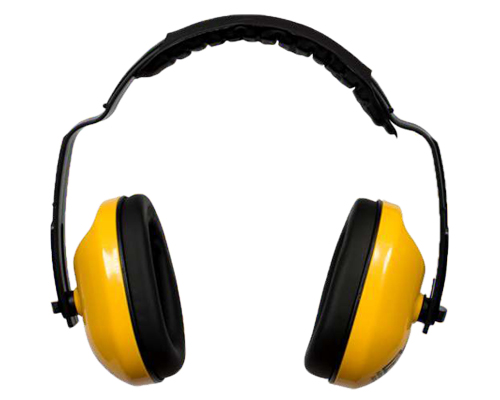Class 5 Hearing Protection: A Comprehensive Guide Leave a comment
Welcome to our guide on Class 5 hearing protection. We will discuss its importance, hearing protection devices, Australian standards to consider, and the best practices for effective use.
When selecting Class 5 hearing protection, it is important to look for products that meet Australian standards. These standards ensure that the protection you choose will effectively reduce noise levels and protect your hearing.
To use Class 5 hearing protection effectively, make sure to follow the manufacturer’s instructions. Proper fit and maintenance are key to ensuring maximum protection for your ears.
In today’s dynamic work environments, where noise levels can often reach hazardous levels, safeguarding one’s hearing is paramount. Hearing protection is crucial to prevent long-term hearing damage from loud noises.
What is the Highest Class of Hearing Protection?
It’s important to know the different levels of hearing protection classes. Class 5 is the highest level of defence according to AS/NZS standards. Unlike lower classes, Class 5 excels in providing maximum attenuation, which is essential in high-noise environments.
The stronger noise reduction is vital for people in industries like manufacturing, construction, and aviation. These industries have much higher noise levels. Class 5 hearing protection sets the standard for safeguarding auditory health in even the most challenging noise environments. It offers unparalleled protection against noise-induced hearing loss.
Exploring Hearing Protection Classes
Before delving into the specifics of Class 5 hearing protection, it’s essential to understand the broader classification system. Hearing protection classes categorise devices based on their noise reduction abilities. Class 1 provides the least protection, while Class 5 offers the most protection.
This classification system is one of two approved methods for testing hearing PPE in Australia. To identify what class of hearing protection, you only need the 8-hour average value to which the worker is exposed in dB(A).
|
LAeq,8h dB(A) |
Class |
|
< 90 |
1 |
|
90 – 95 |
2 |
|
95 – 100 |
3 |
|
100 – 105 |
4 |
| 105 – 110 |
5 |
Unpacking Class 5 Hearing Protection
Class 5 hearing protection represents the epitome of safeguarding auditory health in high-noise environments. With superior reduction capabilities, Class 5 devices ensure maximum protection against noise-induced hearing loss. These devices typically feature advanced engineering and innovative designs to optimise comfort and effectiveness, making them essential tools for individuals working in noise-intensive industries.
Understanding Noise Reduction Ratings (NRR)
In the United States, the Noise Reduction Rating (NRR) system is widely used to rate the effectiveness of hearing protection devices. The NRR quantifies the amount of noise attenuation provided by a device in decibels (dB), with a higher NRR indicating greater noise reduction capability. This system allows users to assess the potential effectiveness of hearing protection in mitigating noise exposure.
However, it’s important to note that in Australia, the NRR system is not an approved method for determining the required level of hearing protection. Instead, Australia mandates the use of either the class system or the Sound Level Conversion (SLC80 rating) metric for this purpose.
Key Differences:
- The NRR system provides a single numerical value representing overall noise reduction, while the class system categorises devices into classes based on their noise reduction capabilities.
- NRR is widely used in the United States, while the class system is the mandated approach in Australia and New Zealand.
- The class system accounts for both the reduction provided by the device and the frequency of the noise, providing a more comprehensive assessment of protection.
What are 5 Types of Hearing Protection?
Earmuffs: A Classic Choice
Earmuffs have long been a staple in the realm of hearing protection, offering robust defence against noise exposure. These devices feature cushioned ear cups that seal around the ears, effectively blocking out external noise. Earmuffs are renowned for their comfort and ease of use, making them a preferred option for individuals seeking reliable protection in noisy environments. Look for Class 5 Earmuffs for your best defence against loud and prolonged noise.
Earplugs: Compact and Versatile
Earplugs come in various forms, ranging from disposable foam to custom-moulded designs tailored to individual ear shapes. Their compact size and versatility make them a popular choice among users who prioritise convenience. Despite their small stature, earplugs provide significant noise reduction, making them a go-to accessory for anyone working in high-noise settings. While not limited to Class 5, earplugs offer effective protection against noise exposure in a wide range of environments.
Canal Caps: Balancing Protection and Communication
Canal caps offer a solution for individuals who require both hearing protection and the ability to communicate in noisy environments. They are able provide balance between audio awareness and noise reduction, making them well-suited for environments where situational awareness is required. While not usually categorised as Class 5, canal caps provide adequate protection for many high-noise environments.
Electronic Hearing Protection: Innovation at its Finest
Electronic hearing protection represents the cutting edge of auditory safety technology. These devices utilise built-in microphones and speakers to detect and suppress harmful noise. Electronic hearing protection offers a customisable listening experience, making it ideal for individuals working in dynamic environments where communication and safety are paramount. While not solely classified as Class 5, electronic hearing protection can provide substantial noise reduction.
Active Noise-Cancelling Headphones: Beyond Traditional Protection
Originally designed for personal use, active noise-cancelling headphones have found their way into professional settings due to their exceptional noise-reduction capabilities. These headphones utilise algorithms to analyse and counteract external noise, creating a quiet environment conducive to concentration and productivity.
While primarily intended for recreational use, active noise-cancelling headphones can serve as additional hearing protection in certain work environments. Though not specifically rated as Class 5, they offer noise reduction suitable for many noisy workplaces.
What is the Australian Standard for Hearing Protection?
Overview of Australian Standards
Australia, like many countries, adheres to specific standards governing the design, performance, and testing of hearing protection devices. These standards aim to ensure the safety and effectiveness of hearing protection equipment, providing users with reliable tools for preserving hearing health.
AS/NZS 1270:2002 – The Australian Standard for Hearing Protection Devices
The Australian Standard for Hearing Protection Devices, AS/NZS 1270:2002, outlines the requirements and testing procedures that manufacturers must adhere to when producing hearing protection equipment. This standard encompasses various aspects, including noise reduction performance, durability, and comfort, to ensure that devices meet stringent criteria for quality and effectiveness.
Compliance and Certification
Ensuring compliance with Australian standards is essential for selecting reliable hearing protection equipment. Manufacturers must test and certify their products to meet AS/NZS 1270:2002 standards. This ensures that their products are safe and of high quality. The testing and certification processes are thorough and rigorous.
To purchase a copy of the AS/NZS 1270 Standards you can click here
Conclusion: Safeguarding Auditory Health for a Lifetime
In conclusion, mastering Class 5 hearing protection is not just about compliance—it’s about safeguarding one of our most precious senses for a lifetime of healthy hearing. By understanding the significance of Class 5 protection, exploring its various types, adhering to Australian standards, and following best practices for selection and usage, individuals can effectively mitigate the associated risks.
Explore our range of hearing protection and other site safety products to find the right solutions for your needs and ensure comprehensive protection in the workplace.
FAQs
Q: How do I know if I need Class 5 hearing protection?
A: If you work in an environment where noise levels regularly exceed 105 decibels (dB), Class 5 hearing protection is recommended to ensure maximum defence against noise-induced hearing loss.
Q: Can I use Class 5 hearing protection in recreational settings?
A: While Class 5 hearing protection offers superior noise reduction, it may not be necessary for recreational activities unless you are exposed to exceptionally high noise levels. However, individuals engaged in activities such as hunting or motorcycling may benefit from the enhanced protection.
Q: How often should I replace my Class 5 hearing protection?
A: The lifespan of hearing protection devices varies depending on factors such as frequency of use, environmental conditions, and maintenance practices. It is recommended to inspect your hearing protection regularly and replace it as needed, typically every 9 to 12 months or sooner if signs of wear or damage are present.
For more expert insights on workplace safety, browse through our website’s range of articles and resources to stay informed and ensure optimal protection for yourself and your team or Contact us today!


